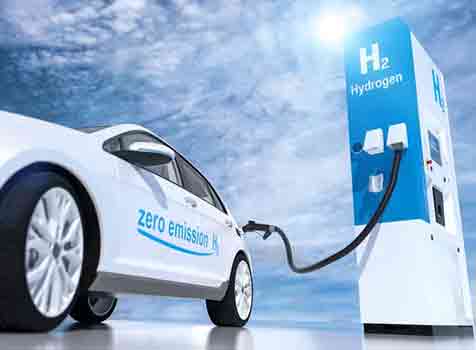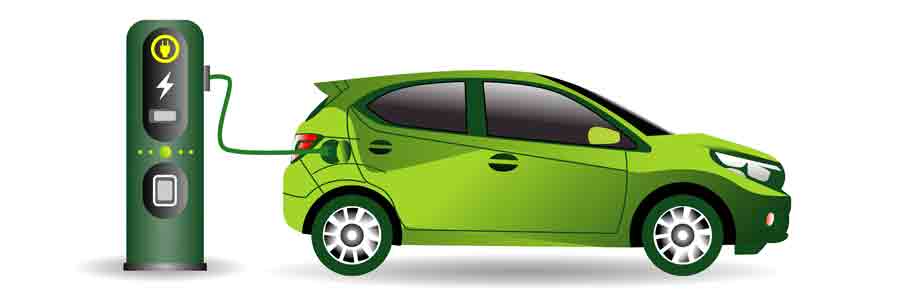Hydrogen-Powered Cars: Fuel Cell Electric Vehicles Explained
What is a Fuel Cell Car?
A fuel cell car, sometimes known as a fuel cell electric vehicle, is an electric vehicle that uses a fuel cell to power its onboard electric motor, sometimes in conjunction with a tiny battery or super capacitor. In general, fuel cells in automobiles generate electricity by using oxygen from the air and compressed hydrogen. Hydrogen cars are categorized as e-cars since they are powered by an electric motor. The typical abbreviation is FCEV, which stands for “Fuel Cell Electric Vehicle” in contrast to battery-powered electric vehicles, or BEV for short.
There is one significant difference between hydrogen vehicles and other electric vehicles: hydrogen vehicles generate their own electricity. This implies that they do not have a built-in battery, like purely electric or plug-in hybrid vehicles do, which can be charged from an external power source. Instead, hydrogen vehicles are equipped with their own efficient power plant, which turns the hydrogen in the fuel tank into energy. The fuel cell is the power plant.

Working of Fuel Cell:
In a fuel cell, a process known as reverse electrolysis occurs. In the process, hydrogen reacts with oxygen. The hydrogen comes from one or more automobile tanks, while the oxygen comes from the outside air. This process generates just electrical energy, heat, and water, which exits the exhaust as water vapor with no emissions.The electricity generated in the fuel cell takes two routes, depending on what the specific driving situation demands. It flows to the electric motor and directly drives the vehicle, and it charges a battery that acts as temporary storage until the energy is needed for the drive. This “buffer” battery is significantly smaller than the battery of an all-electric car – meaning it’s also lighter. It’s also being constantly recharged by the fuel cell.
How do Fuel Cell Electric Vehicles work using Hydrogen?
The vehicle manufacturer defines the power of the vehicle during the vehicle design process by the size of the electric motor(s) that get electric power from the correctly sized fuel cell and battery combination. Although automakers could build an FCEV with plug-in charging capabilities, most FCEVs today use the battery to recoup braking energy, giving extra power during short acceleration events. The amount of energy stored is determined by the size of the hydrogen fuel tank.
Key Components of a Hydrogen Fuel Cell Electric Car:
- Battery :The low-voltage auxiliary battery in an electric drive vehicle provides electricity to start the car before the traction battery is engaged; it also operates vehicle accessories.
- Battery pack :This high-voltage battery stores energy generated by regenerative braking and powers the electric traction motor.
- DC/DC converter :This device converts higher-voltage direct current (DC) power from the traction battery pack to the lower-voltage direct current (DC) power required to operate vehicle accessories and recharge the auxiliary battery.
- Electric traction motor (FCEV) :This motor operates the vehicle’s wheels by drawing power from the fuel cell and the traction battery pack. Some cars have motor generators that do both the driving and the regeneration.
- Fuel cell stack : An assemblage of individual membrane electrodes that generate electricity using hydrogen and oxygen.
- Fuel tank : Stores the hydrogen gas on the vehicle until it is needed by the fuel cell.
- Power electronics controller :This unit controls the speed of the electric traction motor and the torque it produces by managing the flow of electrical energy given by the fuel cell and the traction battery.
- Thermal system :This system keeps the fuel cell, electric motor, power electronics, and other components within the optimum operating temperature range.
- Transmission :The gearbox is responsible for transferring mechanical power from the electric traction motor to the wheels.
Fuel Cell Control Unit:
A vital part of the drivetrain subsystems for fuel-cell electric vehicles is the fuel-cell control unit (FCCU). This unit is in charge of overall process control for the complete fuel-cell system. This entails managing thermal and water resources, managing the processing of hydrogen and air, converting energy, and adhering to all safety and security regulations. The fuel-cell controller and the powertrain domain controller must communicate frequently in order to guarantee that these load and heat criteria are consistently met. For the fuel cell to provide the required quantity of electrical power, the linked system components, such as the hydrogen gas injector, electric air compressor, recirculation pump, sensors, etc., are precisely controlled and monitored by the FCCU. With VAct customized STM32F405 development boards, it is possible to implement the control system for monitoring and enhancing the performance of Fuel Cell Electric Vehicles. Some of the critical parameters of a cell voltage monitoring system are the sampling rate and real-time communication interface. The STM32F405 has two CAN interfaces that meet the communication requirement for a cell voltage monitoring system.
How Environment friendly and Sustainable are Hydrogen Drives?
A car that only uses regenerative energies and emits no harmful emissions would be perfect from an environmental standpoint. By standard, alternative drives must be intended to reduce pollution emissions, particularly the climate-damaging CO2 and also other hazardous gases like nitrogen oxides. A hydrogen car’s exhaust air is entirely made up of water vapor. As a result, the fuel cell powertrain produces no emissions locally. This means that it keeps the city air clean.

Conclusion:
In short, hydrogen drives have the potential to enable environmentally sustainable mobility. This, however, is dependent on the use of renewable energies in hydrogen generation and the expansion of technical infrastructure to enable shorter transport routes. Hydrogen Fuel Vehicles are one of the optimum choices in terms of environmental friendliness as the fuel cells are completely (100%) renewable.
